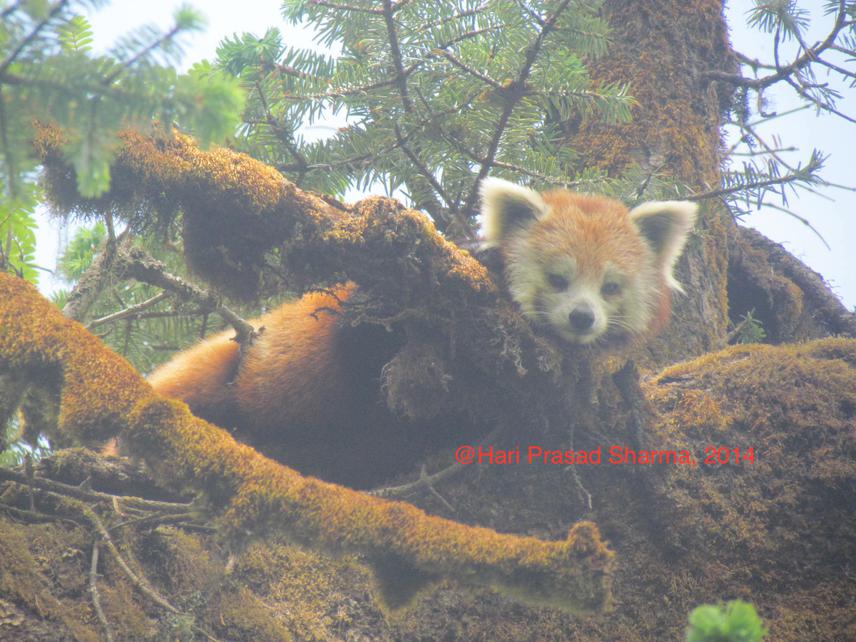Social media video featuring the project.
Red panda Hari
10 Sep 2015 Nepal, Indian Sub-continent Mammals
Exploration and Diet Analysis of Red Panda (Ailurus fulgens) for its Conservation in Khaptad National Park
Conservation of Red Pandas in Nepal: Characterizing Disease, Livestock Mitigation, and Public Education
The proposed project will make notable contributions towards red panda conservation in Nepal.

Red panda (Ailurus fulgens) is globally categorized as vulnerable to extinction by the IUCN Red List and in Nepal as a protected priority species under the National Parks and Wildlife Conservation Act 1973. It is one of the cryptic species, primarily herbivore and endemic to Himalaya. Its regular monitor is difficult due to its rarity, however, presence data on different geographic regions has available in some extent and most of these were based on fecal sign. Anthropogenic changes to the environment such as farming and livestock grazing play a critical role in wildlife conservation. However, local people have unique knowledge about the wildlife and are in the best position to provide long-term stewardship. To contribute to the development of conservation policy for the red panda in Nepal, this study propose to combine questionnaire interview and molecular tools (through faeces) to assess red panda’s population structure and possible threats on their health. In the process, it will reconcile people’s knowledge with scientific data, and provide immediate feedback to local people and resource managers.
The proposed project will make notable contributions towards red panda conservation in Nepal. Most of the red panda populations in Nepal are located in patchy habitats both inside and outside protected areas. Habitat fragmentation is clear from their current distribution. However, whether or not such physical isolation has resulted in reduced genetic diversity and gene flow is not known. In our previous study, we found high parasitic prevalence in red panda, which may be related to loss of genetic diversity. Mammalian immune system is critical to their resistance to disease, which is controlled to a large degree by the level of diversity in the Major Histocompatibility Complex (MHC gene family). If red panda has low genetic diversity and gene flow, their immune function could be impaired, which could increase the risk of disease epidemics wiping out the population.
Therefore, it is crucial to red panda’s conservation to have a baseline dataset on their population genetics. Our previous findings indicate that sympatric red panda and livestock have high parasitic prevalence and share many parasite taxa. Spill-over and spill-back effects of disease transmission among wildlife, livestock and human not only can affect wildlife health, it can also create human-wildlife conflicts. Local people’s knowledge, perception and veterinary/medical resource availability can be critical issues in red panda’s conservation. Our interview will provide the data to assess disease risk of red panda and livestock, with the potential to inspire a new chapter of grass-root level education and public participation in managing human-livestock-wildlife diseases.
Social media video featuring the project.
Red panda Hari